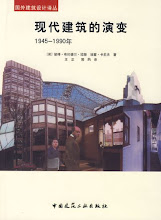
Tuesday 30 September 2008
Sunday 28 September 2008
Friday 26 September 2008
Wednesday 24 September 2008
Monday 22 September 2008
The City, The Building, the Room
Studio Introduction
VENICE: The exploration of urban space commences with proposals for interventions in the campi of Venice. The structures are required to contain a café counter, advertising for political and commercial use, an atm, a public lavatory and an electronic information point, and to reconfigure the space in which they stand.
VICENZA: In the 500th anniversary of his birth, proposals are sought to complement Andrea Palladio’s Basilica (1546) in the Piazza dei Signori in Vicenza. Students are required to provide a critical response to adjoin this urban masterpiece in the form of a new building, in the context of a clearly defined major civic space.
VERONA: Finally you are invited to design a room from which fair Verona can be surveyed. Located at an upper level, the room is expected to contain all that is necessary to appreciate the view across the city.
Linked from the blog http://www.archibase.net
Saturday 20 September 2008
Venice Architecture Biennale 2008
OUT THERE
The vast exhibition of contemporary architecture which is the Venice Biennale (curated by Aaron Betsky) opened last weekend in a stormy atmosphere which made the exhibitions oases of rather damp calm, despite the unsettling luxurious aspirations of some of the exhibitors. How nature, not to mention the current economic storms, intrudes on the best laid plans! The utopian visions of the digital future and interactive environments with new fluid forms are presented in a stunning display at the Arsenale. Marked by a particularly stimulating entrance area ( Rockwell Group with Jones / Kroloff) that sets a high standard which the subsequent sequence of displays extend in a series of varied rooms. Much of this material is not new (either in ideas or forms), but is presented here as a spatial experience which tantalises the visitor with possible worlds. The indulgence of the creators in focusing on their own concerns betrays the sel-referential interest of much of this work. The MVRDV / Philippe Rahm section for example, with its futuristic urban animation, relaxing naked people and musician improvising on a saw suggests nothing more than the continuing polarity between attention seeking techno-geekiness and a late revival of hippiedom, ideas first synthesised forty years ago by Superstudio.
The displays have a strongly historicist feel, with some of the original characters, represented especially by Coop Himmelblau expanding on their ideas for interactive autonomous environments. The Roma Interrotta exhibition of 1978 is revived as an antechamber to a display of contemporary ideas for Rome, Uneternal City, which takes the earlier urban speculation forward. The other developments of that era are acknowledged in the Italian Pavilion at the Giardini with exhibitions of Madelon Vriesendorp's provocative images for OMA, Zaha Hadid's early models and paintings and various works from the office archive of Frank Gehry. The form-laden nature of this work sits somewhat uncomfortably with a series of displays which deal with the social and ecological aspects that are of contemporary concern, but then in totality the exhibition seems to tip the hat quite frequently to once-were-deconstructivists, as if in memory of Betsky's own involvement in defining that movement.
The British Pavilion presents a series of housing projects, solid buildings ill-served by the the witlessness of the display. dRMM's work in particular suffers from the miserable position their models occupy. Contrast this unappealing tightness wit the engaging generosity of the French Pavilion, with pivoting models encouraging engagement from the exhibition visitors, and the German Pavilion's reassuringly 'chaotic' ecological display.The real surprises within the many varied displays are perhaps best summarised by the Mexican contribution at the Arsenale which provides some welcome social content in distinction to the overwhelmingly form driven displays there. At the Giardini the USA Pavilion provides a cooler response to similar issues, a development which can only be welcomed.
As always the Nordic Pavilion hovers elegantly at the centre of the Giardini. This year it presents a monographic exhibition on the work of the pavilion's architect Sverre Fehn which in its tranquil confidence provides reassurance that all novelties in architecture eventually pass away...
Thursday 18 September 2008
Tuesday 16 September 2008
Sunday 14 September 2008
Friday 12 September 2008
Wednesday 10 September 2008
Monday 8 September 2008
Saturday 6 September 2008
Thursday 4 September 2008
Tuesday 2 September 2008
Subscribe to:
Posts (Atom)























